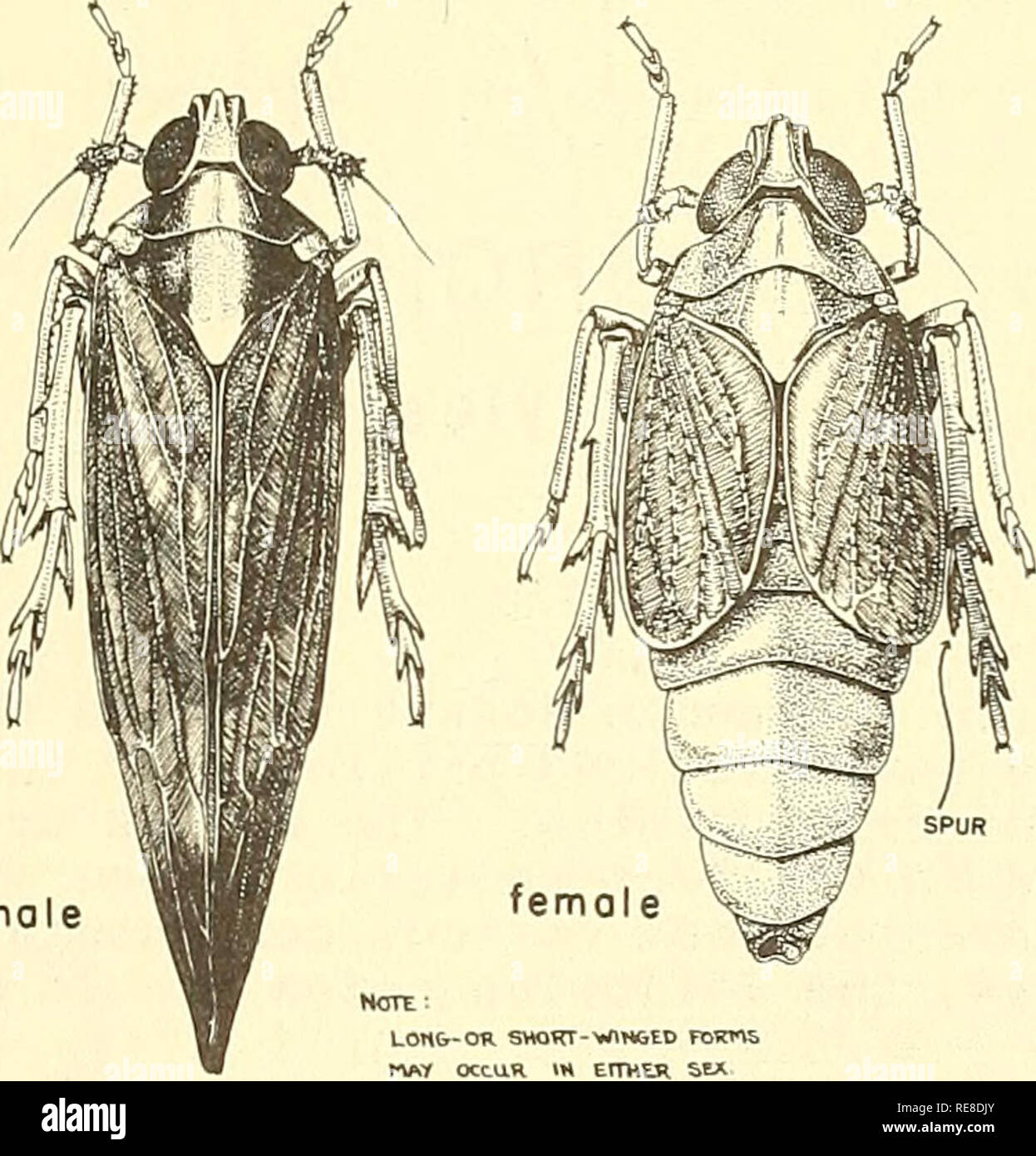. Cooperative economic insect report. Beneficial insects; Insect pests. - 973 - The Rice Delphacid, Sogata orizicola Muir, and Two Closely Related Species (Homoptera: Fulgoroidea: Delphacidae) The rice delphacid, Sogata orizicola Muir, is, as far as known, the sole vector of a virus disease of rice which has been called "hoja blanca". This disease was first observed in the Western Hemisphere about 1954, and in the United States in September, 1957, at Belle Glade, Florida. An additional infection was found in September, 1958, at Bay Saint Louis, Mississippi. The disease is not prevale

Image details
Contributor:
The Book Worm / Alamy Stock PhotoImage ID:
RE8DJYFile size:
7.1 MB (356.9 KB Compressed download)Releases:
Model - no | Property - noDo I need a release?Dimensions:
1548 x 1614 px | 26.2 x 27.3 cm | 10.3 x 10.8 inches | 150dpiMore information:
This image is a public domain image, which means either that copyright has expired in the image or the copyright holder has waived their copyright. Alamy charges you a fee for access to the high resolution copy of the image.
This image could have imperfections as it’s either historical or reportage.
. Cooperative economic insect report. Beneficial insects; Insect pests. - 973 - The Rice Delphacid, Sogata orizicola Muir, and Two Closely Related Species (Homoptera: Fulgoroidea: Delphacidae) The rice delphacid, Sogata orizicola Muir, is, as far as known, the sole vector of a virus disease of rice which has been called "hoja blanca". This disease was first observed in the Western Hemisphere about 1954, and in the United States in September, 1957, at Belle Glade, Florida. An additional infection was found in September, 1958, at Bay Saint Louis, Mississippi. The disease is not prevalent in the major rice-producing areas of the Orient, although an apparently similar infection of rice is known in Japan. Symptoms of the disease include yellowish-white discoloration or streaking of the leaves and affected plants often fail to head. Yields of rice in infected fields are often reduced 25 to 50 percent and the disease is capable of completely ruining the crop, parti- cularly late plantings. The estimated loss to the rice crop in Cuba in 1956 was 25 percent. The insect has been recorded in Argentina, Colombia, Venezuela, Costa Rica, British Guiana and Cuba, in addition to the United States. First records in this country are September 14, 1957, at Belle Glade, Florida, and September 3, 1958, at Bay Saint Louis, Mississippi. The preferred survey procedure for S_. orizicola consists of sweeping of cul- tivated and volunteer rice, not overlooking small patches that may be present at the margin of fields. General sweepings of other grasses do not appear to be very satisfactory for collecting S_. orizicola; however, S. fucifera (Horvath) may be abundant. —. SOGATA ORIZICOLA The non-specialist can recognize the family and more important members of the genus by the characters illustrated in the accompanying habitus drawings. The following points should be noted: 1. The family Delphacidae is easily distinguished from all other Homoptera by the movable spur at the apex of